#black art matters
Text

Mae, 23
“I’m wearing a top I got in Mexico City, a scarf I thrifted as a skirt, and shoes I thrifted as well. The earrings are from a vendor at a Black Art Matterss event and the rest of the jewelry is from Harlem. My style is inspired by the 60s and 70s and West African funk artists of that time. I’m Cameroonian myself and my dad was wearing outfits you’d see on Soul Train or at the Summer of Soul during that time period but in Cameroon.”
Aug 27, 2023 ∙ Bed-Stuy
#nyc looks#street style#new york#street fashion#style#outfit#thrifted#cameroonian#bed stuy#black art matters
2K notes
·
View notes
Text
Celebrating Black History Month with a selection of artworks and the art history of Black American artists.

Tar Beach Story Quilt • # 1 of 5 in the series Woman on a Bridge • 1988 • Acrylic paint, canvas, printed fabric, ink, and thread • The Guggenheim Museum, New York City
Ringgold’s creates quilts — a traditional American craft associated with women’s communal work that also has roots in African culture. She originally collaborated on the quilt motif with her mother, a dressmaker and fashion designer in Harlem. That Ringgold’s great-great-great-grandmother was a Southern slave who made quilts for plantation owners suggests a further, perhaps deeper, connection between her art and her family history. – The Guggenheim Museum
#art#art history#textile art#faith ringgold#woman artist#quilt artist#story quilts#narrative artwork#mixed media artwork#african american artist#black art matters#black american art#black history month 2024
187 notes
·
View notes
Text
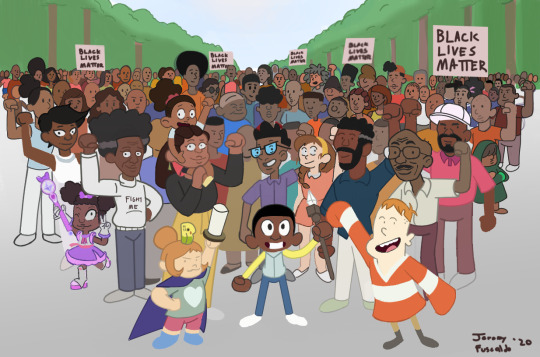
Because Craig of the Creek announced they've finished recording their final episode, I decided to share MFA sketch I made during the last year of my MFA:
Craig, his friends, family and communitiy members in a Black Lives Matter March.
#black lives matter#Craig of the Creek#Black Lives Matter March#Craig#Kelsey#JP#Sketch#Black Art Matters#Illustration#Character Design
150 notes
·
View notes
Text

Kadir Nelson (American, b. 1974) • New Yorker cover • February/March, 2015
Celebrated illustrator Kadir Nelson began his career as the lead conceptual artist for Steven Spielberg’s Oscar-nominated 1997 feature, “Amistad.” His works are usually figurative paintings that focus on historical narrative and heroic subjects in American culture. Nelson’s art is often informed by the Old Masters like Henry O. Tanner and displays a realistic technique that incorporates modern urban realism and masterly works of turn-of-the-century American painters.
“ There are hundreds of artists, but my style has been heavily influenced by Norman Rockwell, N.C. Wyeth, Ernie Barnes, Dean Cornwell, Charles White,”explained Nelson, 44. “I like the style, I like their technique, the emotion that comes through their work, the light and shadow, the drama, the use of color and storytelling. ”
— Kadir Nelson
#illustration#art#illustrator#artwork#kadir nelson#magazine cover illustration#new yorker magazine#black artist#african american illustrator#american artist#painter#oil painting#painting#black history month 2024#black art matters#sassafras & moonshine blog#illustration blog
16 notes
·
View notes
Text
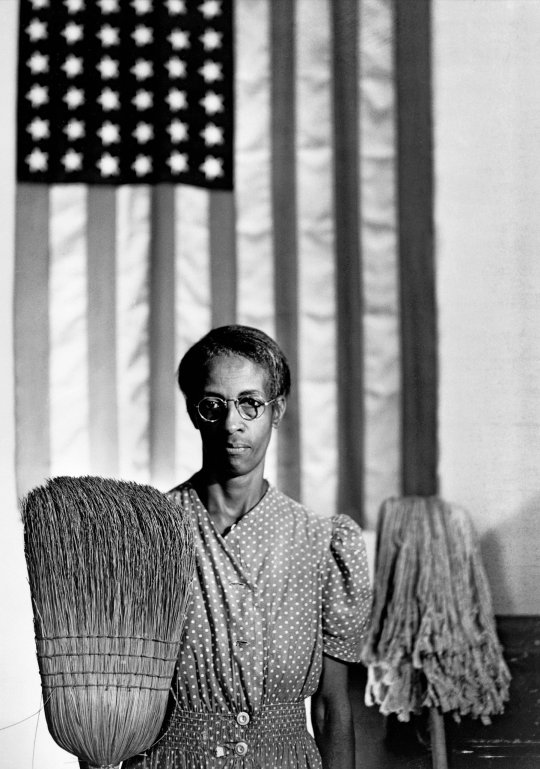
Gordon Parks, American Gothic, Washington, D.C., 1942.
One of the first parodies of Grant Woods's now famous painting American Gothic, this time depicting black working-class American Ella Watson. This is the most famous piece of a photographic series focusing on Watson's life.
7 notes
·
View notes
Text

#STEM#women in stem#steminist#black art matters#melanin#bipoc#Threadless#support black art#black women in stem#black art#cozcon
45 notes
·
View notes
Video
youtube
Basquiat's Defacement: Racist Police Brutality and Property Damage
We're looking at the relationship between police brutality and property damage through Jean-Michel Basquiat's Defacement, a painting made to commemorate the murder, by the police, of the artist Michael Stewart.
Basquiat and Stewart shared many things in common which made Basquiat even more sensitive to the tragedy.
Learn more about racism, police brutality, private property through Basquiat's Defacement.
Split a donation between 70+ community bail funds, mutual aid funds, and racial justice organizers: https://secure.actblue.com/donate/bai...
Basquiat's "Defacement": Trauma, Majesty & State Violence:
• Basquiat's "Defacement": Trauma, Maje... "Defacement:" Ambivalence, Identity, and Black Lives Matter:
• "Defacement:" Ambivalence, Identity, ...
Jean Michel Basquiat Documentary The Radiant Child: • Video
#youtube#Basquiat's Defacement: Trauma Majesty & State Violence:#Jean Michel Basquiat#Basquiat and Police Brutality#Cops.police and hate#Basquiat's Defacement: Racist Police Brutality and Property Damage#Black Street Art#Black Art#BlackConte#porary Art#NYC#Black Art Matters#Black Lives Matter#Trauma#Majesty and State Violence#MIchael Stewart#cops kiliing Black Artists#Graffiti#Street Art
2 notes
·
View notes
Text

“Yoo Cute" by Brittnee Lavender
Mixed paper x conversation hearts
#black owned#buy black#black owned shops#support black artists#surreal vintage#surreal collage#collagist#collage art#brown collage#vintage black photography#black photography#afro futurism#black art matters#african american photography#retro collage#kitschy art#collage artist#retro black women#brown girl Art#futurism#Afro#retrofuturism#the shirelles#hairspray#black creatives#ellen gallagher#yours truly
3 notes
·
View notes
Text
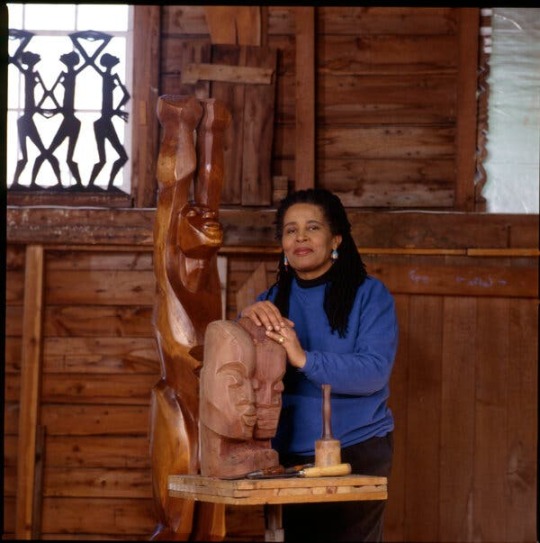
Sept. 28, 2022
Valerie Maynard, a Harlem-bred artist whose sculptures and prints explored the complexity, but also the humanity, of Black identity while tackling racism in the civil rights and apartheid eras and beyond, died on Sept. 19 in Baltimore. She was 85.
The writer Alexis De Veaux, a longtime friend, said she died of cardiac arrhythmia in a hospital.
While Ms. Maynard, who was aligned with Black Arts Movement of the 1960s and ’70s, explored various mediums and materials over a six-decade career, her work was consistently unflinching in its social commentary. It mined the historical legacies of oppression, both at home and abroad, while also celebrating the joy in the African American cultural experience and the beauty of the Black visage and form.
“This is art that summons, that creates what should be and disassembles what should not,” Toni Morrison wrote in the introduction to “Lost and Found,” a limited-edition 1989 portfolio of Ms. Maynard’s lithographs. That portfolio was part of “No Apartheid,” a celebrated series of more than 250 works using spray-painted acrylic that Ms. Maynard produced in the 1980s and ’90s. “The medium is dream,” Ms. Morrison added, “but the power is magic.”
Ms. Morrison, Stevie Wonder and Lena Horne were among the notables who purchased Ms. Maynard’s work. Her sculptures were also seen in “If Beale Street Could Talk,” Barry Jenkins’s 2018 film adaptation of the 1974 novel by Ms. Maynard’s longtime friend James Baldwin.
The plot of that book and movie involves a young sculptor imprisoned for a crime that he did not commit. Ms. Maynard and others who knew Mr. Baldwin believed that the story was based in part on the experience of Ms. Maynard’s older brother, William Maynard Jr., an aspiring actor known as Tony, who was a friend of Mr. Baldwin’s and who had been falsely accused of murdering a Marine, leading to more than six years in prison before he won his release.
Ms. Maynard provided her own commentary on such injustices with works like her acclaimed sculpture “We Are Tied to the Very Beginning,” a bust of a Black male head, its face frozen in an expression of agony with two fists clenched on a wood pedestal beneath it.
Although Ms. Maynard never achieved the fame of Mr. Baldwin, Maya Angelou, Amiri Baraka or some of the other artists associated with the Black Arts Movement, her influence was deeply felt.
“Valerie Maynard is one of the most important postwar American artists that most people have never heard of,” Bill Gaskins, the founding director of the Photography + Media & Society program at the Maryland Institute College of Art, said in a phone interview. Mr. Gaskins wrote an essay for the catalog of a 2020 retrospective of Ms. Maynard’s work at the Baltimore Museum of Art.
“She was committed to the evolution of the human species,” Mr. Gaskins said. “What did it mean to be human from the perspective of women? Of Black people? All the while, she was subtly revealing the contradictions of life in the 20th and 21st centuries, always with an eye toward our better selves.”
Ms. Maynard’s work is in “Black Melancholia,” a group show at the Hessel Museum of Art at Bard College in Annandale-on-Hudson, N.Y., that explores “the depression that racism itself generates — the dread, anger and despair that create a low-pressure area in the soul,” Holland Cotter wrote in a New York Times review in June. The show runs through Oct. 16.
Even Ms. Maynard’s large-scale works of public art — like her sweeping glass-and-tile mosaic mural in the 125th Street station of the Lexington Avenue subway line in Harlem, or her nearly 17-foot-tall stainless steel airfoil sculpture commemorating Black veterans at Ramsay Park in Boston — convey a Black point of view that she felt was intrinsic to her work.
“It’s in everything,” Ms. Maynard said of her Black identity in a 1990 interview with Art Papers, an Atlanta-based art advocacy group. “You cannot shake off who you are. Your voice, the way you sit, the way you talk, everything — it cannot be taken away.”

Ms. Maynard spent much of her career in education. She taught at Howard University, the University of the Virgin Islands and the Baltimore School for the Arts, where she founded a sculpture program. For her, fame was not the point.
“She never sought to be in the public eye,” Ms. De Veaux said. “Her art was her life. As Valerie always said, she ‘lived right on the edge of approval,’ which meant that she was free to live as fully as she wanted to, and as joyfully as she wanted to.”
Valerie Jean Maynard was born in Manhattan on Aug. 22, 1937, the middle child of William and Willie Fred (Pratt) Maynard. Her father held a variety of jobs — security guard, dockworker, bartender — while her mother stayed home with the children.
She is survived by her brother and a sister, Barbara Fraser.
Although she was born in the waning years of the Harlem Renaissance, the neighborhood was still a cauldron of cultural ferment when she was growing up there, on West 142nd Street. Her family lived next door to the poet Audre Lorde; Mr. Baldwin, who became a lifelong friend, lived nearby. “I went to school with one of his sisters and spent many hours just sitting and talking with him and his mother,” Ms. Maynard said in an interview published this month in Baltimore magazine.
Ms. Maynard told the magazine that she saw jazz luminaries like Charlie Parker and Dizzy Gillespie on their way to gigs at the Savoy Ballroom and attended Sunday services at Abyssinian Baptist Church presided over by the fiery activist pastor and future congressman Adam Clayton Powell Jr.
“You just saw these people as neighbors,” she said. “‘Oh, that’s Langston Hughes over there.’ The fame didn’t mean anything to us. It wasn’t until I was older and looking back that I saw the enormity of it.”
In her youth she took classes at the Museum of Modern Art on weekends, and she went on to study art at the New School for Social Research in Greenwich Village. She received a master’s degree in sculpture and art from Goddard College in Vermont in 1977.
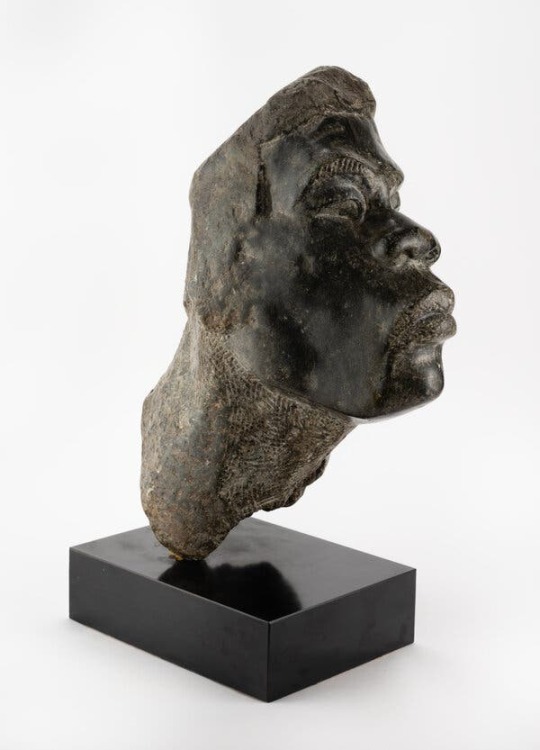
Despite her training, one of her best-known pieces, “Rufus,” a brooding bust of a man’s head, sprung from a beginner’s attempt at stone carving, plus a dash of serendipity.
While working at a summer camp in Brattleboro, Vt., in 1968, Ms. Maynard leaped from a rope swing at a swimming hole and discovered a large rock underwater that for some reason intrigued her. She later returned and hauled the hulking stone from the mud, using a rope and pulley system of her own design.
“That was another thing that Valerie was really good at,” Ms. De Veaux said. “She knew how to use her hands.”
Back in her studio, Ms. Maynard “waited for what she believed was the spirit inside the stone to reveal itself; only then did she carve away to release the spirit,” Ms. De Veaux said, adding that Ms. Maynard made a point of using hand tools, not electric. “She told me, ‘It’s all in the reveal, Alexis. You can’t write what hasn’t been revealed.’”
4 notes
·
View notes
Text
"You can do anything that you want to do. You can be anything that you want to be. However, you must be determined. You must work hard. You must not let anyone define who you are and what you can do."
Gloria Long Anderson - American Chemist and Educator
#quoteoftheday#quotes#quotesoftheday#quotes of tumblr#life quotes#inspirational#life quote#chemist#chemistry#educator#educators#gloria long anderson#black history month#black history month 365#black history month 2024#black art matters
0 notes
Text
Thank you to the Cincinnati Art Museum for the free horderves, and wine! Thank you for letting me use your establishment as inspiration for my own art! Thank you for always making me feel so welcomed even though lately it seems as if I live there. We are on a first name basis now I’ll be back next week! Lol now off to Music Hall for the Last Jedi orchestra concert! 🎻🎶🎵

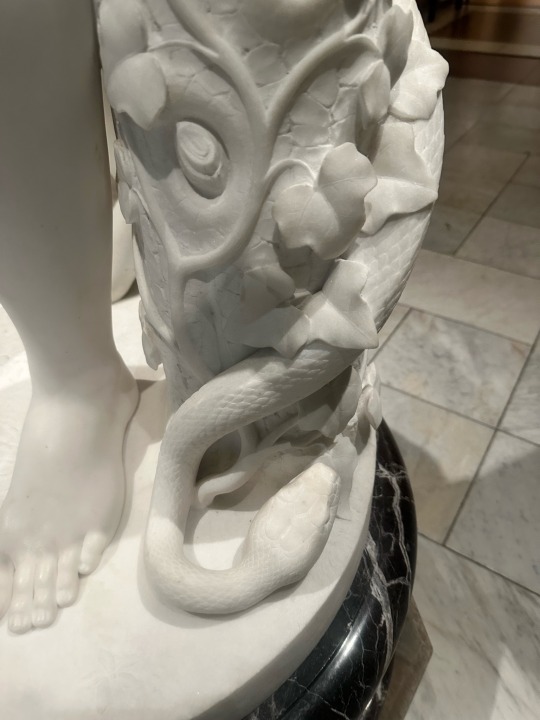





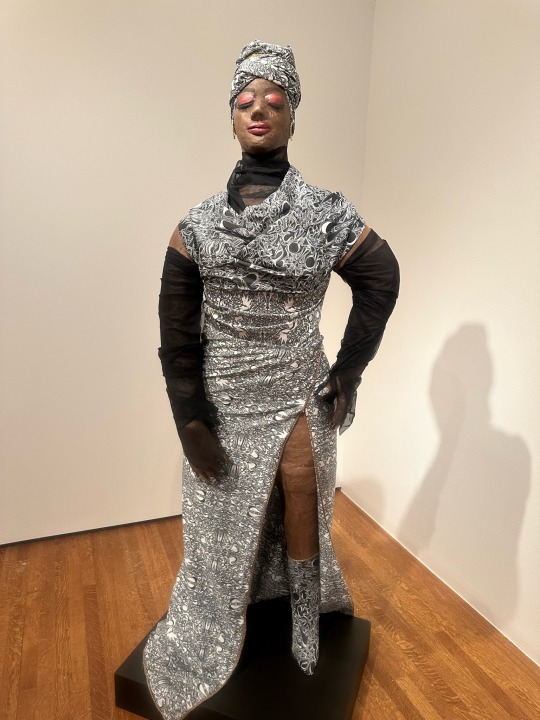


#art creation#art museum#ceramics#paintings#inspration#black art#black art matters#friday#cincinnati ohio
0 notes
Text
How to draw Black characters. Because it's way too obvious when you drew a white person and gave them Black skin.
https://www.tiktok.com/t/ZTRg6YsKN/
-fae
37K notes
·
View notes
Text
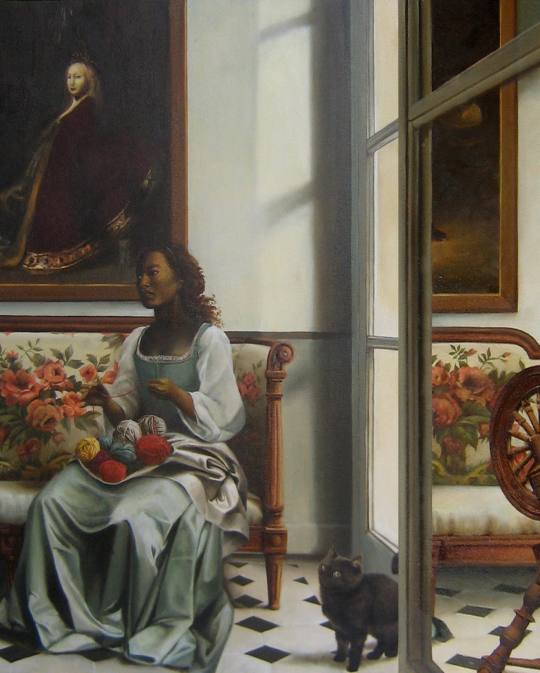
Elizabeth Colomba (b. 1976) is a French painter of Martinique heritage known for her paintings of black people in historic settings. She currently resides in Harlem, New York.
#art#painting#fine art#contemporary painting#elizabeth colomba#contemporary painter#french artist#oil painting#women in paintings#pagan sphinx art blog#black woman artist#woman artist#art blogs on tumblr#art lovers on tumblr#black art matters#contemporary french art
52 notes
·
View notes
Text

Because of the situation surrounding Warner Bros Discovery and how it was effecting Cartoon Network Studios, I felt compelled to draw a Craig of the Creek tribute drawing to honor the staff that was working on the 5th season.
Over the past year, I really wanted to work for the show because I loved it so much, but after what happened, the staff already employed is needed now more than ever.
Here's hoping that everything will be alright for the Creek crew.
22 notes
·
View notes
Text
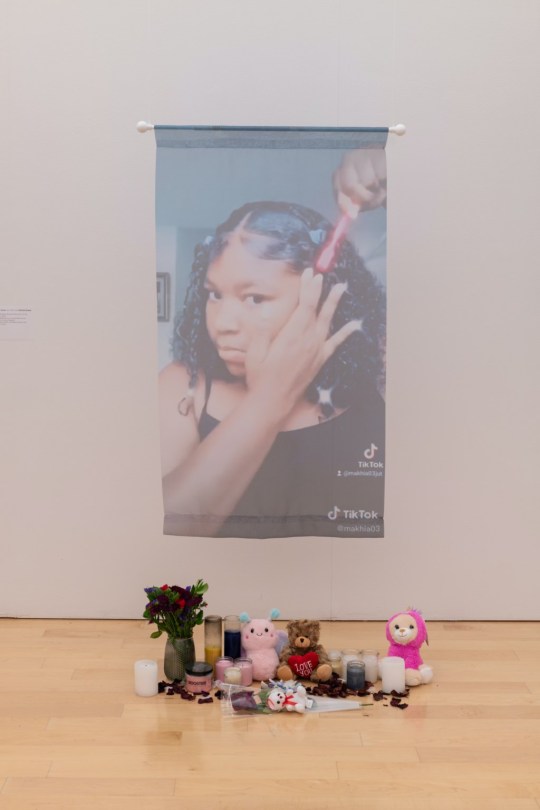

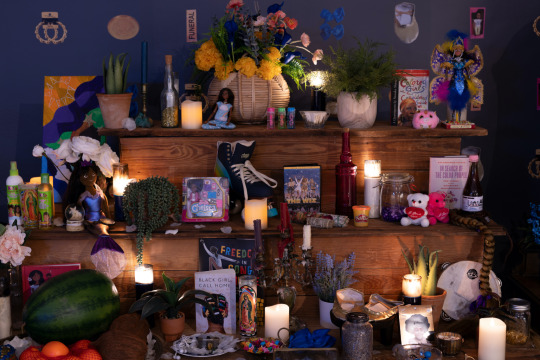
Installation view of Freedom Square: The Black Girlhood Altar at the Chicago Cultural Center
The exhibition at the Chicago Cultural Center opens with the installation “Homegoing.” The work is a suspended image depicting a screenshot from Ma’Khia Bryant’s personal TikTok. In the photo she’s laying her edges, her jet-black hair shining, her baby face clean and free of makeup. Below the printed photo is a collection of candles, stuffed animals, and a bouquet. On April 20, 2021, Ma’Khia was killed by an Ohio police officer in what was later determined a justifiable homicide. She was 16 years old.
In the gallery titled Rest and Recess: The Courtyard, the exhibition transports the viewer to the Caribbean where Black girls play together unburdened and hopeful. A tree, sculpted by Robert Narciso and made from branches from Rekia Boyd’s family home, sits in the center of the room casting a protective shadow over everything. From its branches hang yellow paper hearts scribed with the hopes and dreams of little Black girls. The sound of their joyful cacophony activates the space.
[ x ]
#chromatic voice#ma'khia bryant#rekia boyd#a long walk home#scheherazade tillet#robert narciso#we all make art#usermarmalade#police brutality#missing and murdered black women#say her name#black lives matter
3K notes
·
View notes
Text


Fabiola Jean-Louis, "Rewriting History." Left, Marie Antoinette is Dead. Right, Madame Leroy.
Haitian sculptor, painter, and photographer Fabiola Jean-Louis uses various techniques to imitate classical paintings, but with black women as the subject. Her work is exceptionally intricate, involving dresses entirely made of paper (see Marie Antoinette is Dead) and hand-crafted props and backdrops.
#Fabiola Jean-Louis#Rewriting History#Black Art Matters#Photography#female artists#Classical Art#Art history
7 notes
·
View notes